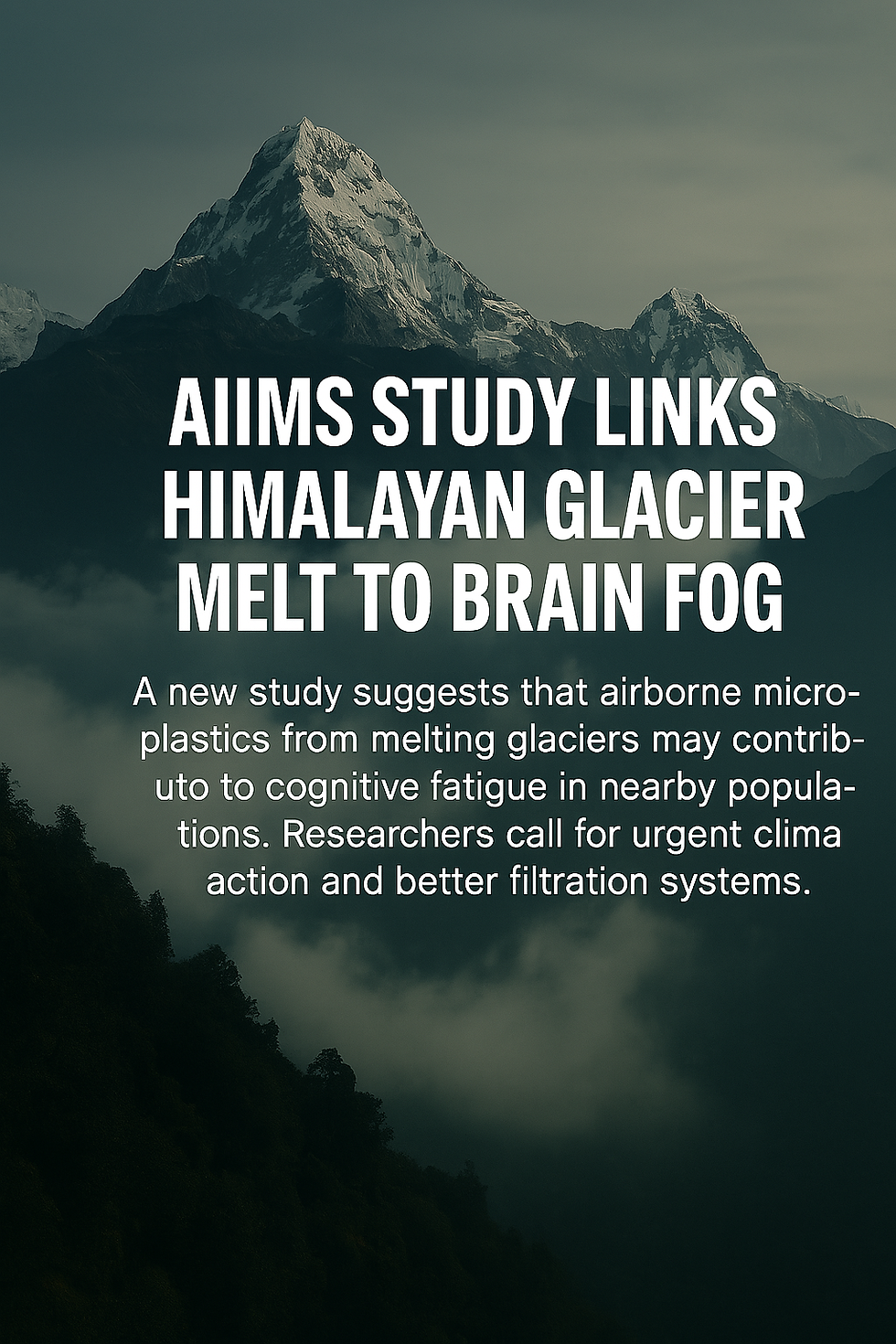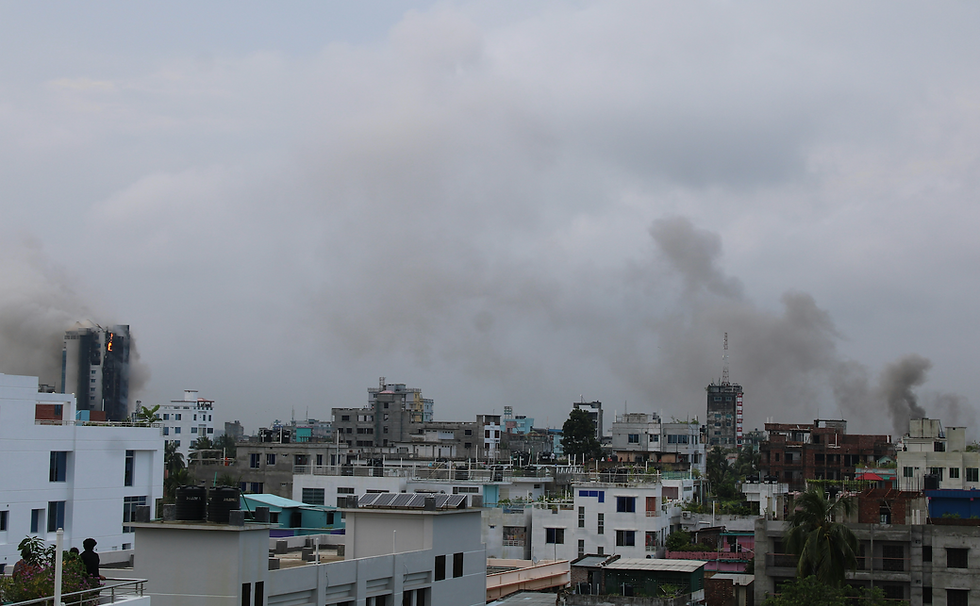The Himalayas Are Throwing Microplastics Into Your Brain
- yakub Pasha
- Jul 8
- 2 min read
Imagine waking up in a pristine Himalayan village, surrounded by snow-capped peaks—and feeling mentally foggy, sluggish, and drained. No, it’s not altitude sickness. It’s microplastics in the air, swirling down from melting glaciers. That’s the chilling revelation from a 2025 AIIMS-backed study, conducted in collaboration with researchers from Sagarmatha National Park (Nepal) and Lahaul-Spiti (India).
What’s Happening—In Simple Terms
As Himalayan glaciers melt due to rising temperatures, tiny plastic particles—called microplastics—are released into the air and water. These particles are so small they can be inhaled or absorbed, and they’re now being linked to cognitive fatigue, aka brain fog, in nearby populations.
Where & When
Study Period: Pre-monsoon season of 2023–2024
Locations: Chorabari Glacier (Uttarakhand), Lahaul-Spiti (Himachal Pradesh), and Sagarmatha National Park (Nepal)
Major Findings
Microplastics detected in freshly fallen snow and glacial runoff
Common polymers found: polyethylene, polystyrene, polypropylene
Airborne particles traced to tourism, trekking gear, and distant industrial zones
Cognitive symptoms reported in high-altitude populations: fatigue, memory lapses, and reduced focus.
Who Should Be More Careful?
Mountain communities living near melting glaciers
Trekking guides and tourists exposed to airborne particles
Children and elderly with weaker immune and neurological systems
Researchers and field workers stationed at high-altitude labs
What Should Governments Do?
India’s Plan
Expand glacier monitoring stations with microplastic sensors
Regulate plastic use in tourism zones
Launch awareness campaigns in Uttarakhand, Himachal, and Ladakh
Fund filtration systems for drinking water in glacier-fed regions
International Action
Enforce plastic-free trekking protocols
Collaborate on airborne microplastic tracking
Include glacier pollution in climate summits and treaties
Support clean-up missions in high-altitude zones
Immediate Repercussions
Brain fog symptoms in affected populations
Contaminated water sources from glacial runoff
Disruption of local biodiversity due to plastic ingestion
Tourism backlash if health risks aren’t addressed
How to Mitigate
Install air filtration units in high-altitude schools and clinics
Promote biodegradable gear for trekkers
Ban single-use plastics in protected zones
Train locals in plastic waste management
Who’s Impacted Most?
Group | Risk Level | Why? |
Himalayan villagers | 🔴 High | Daily exposure to air and water |
Trekking communities | 🟠 Medium | Seasonal exposure, gear pollution |
Wildlife (snow leopards, birds) | 🔴 High | Ingestion of microplastics |
Downstream populations | 🟡 Low | Water contamination risk |
Sibel’s Opinion
“When glaciers melt, we expect floods—not fog. But now, the Himalayas are whispering a warning: our plastic obsession is clouding minds and ecosystems. If we don’t act fast, the world’s highest peaks may become the world’s most polluted lungs. And that, darling, is a summit no one wants to reach.”







Comments